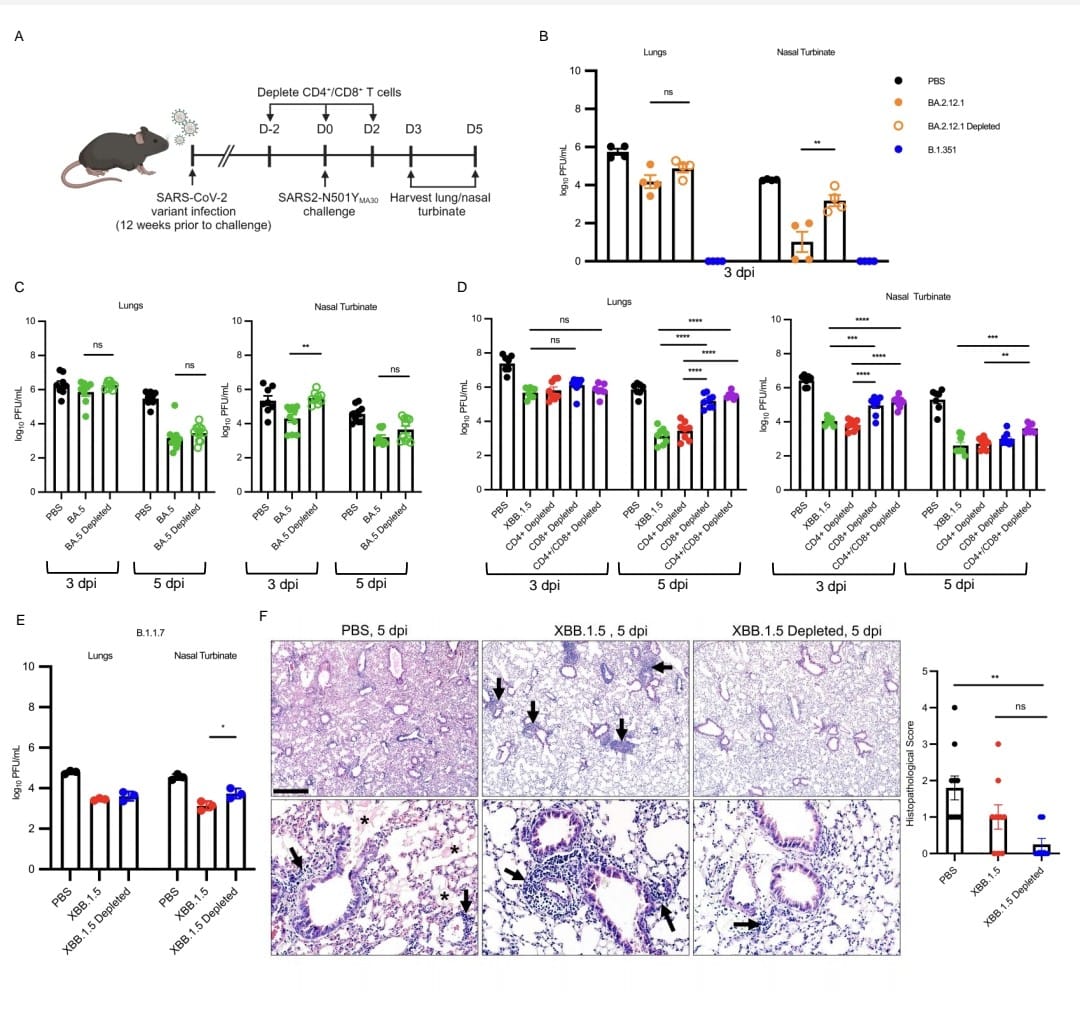By Abby Odle et al.
Source JCI Insight
This study found that mice previously infected with recent SARS-CoV-2 variants like Omicron were protected from severe disease when challenged with an ancestral-like virus strain, even without high levels of neutralizing antibodies.
The protection was partly due to virus-specific memory T cells, especially in the nose. T cell depletion delayed virus clearance but did not affect survival, suggesting other immune mechanisms also contribute.
Mice had strong antibody binding to the challenge virus, hinting at non-neutralizing antibody functions providing cross-protection.
The results highlight the importance of T cells and diverse antibody responses, beyond just neutralizing antibodies, in conferring broad immunity against evolving SARS-CoV-2 variants.
Widespread vaccination and natural infection have resulted in greatly decreased rates of severe disease, hospitalization and death after subsequent infection or reinfection with SARS-CoV-2. New vaccine formulations are based on circulating strains of virus, which have tended to evolve to more readily transmit human to human and to evade the neutralizing antibody response. An assumption of this approach is that ancestral strains of virus will not recur. Recurrence of these strains could be a problem for individuals not previously exposed to ancestral spike protein by vaccination or infection. Here, we addressed this question by infecting mice with recent SARS-CoV-2 variants and then challenging them with a highly pathogenic mouse-adapted virus closely related to the ancestral Wuhan-1 strain (SARS2-N501YMA30). We found that challenged mice were protected from death and substantial weight loss, even though they generally had low or no neutralizing antibody response to SARS2-N501YMA30 at the time of reinfection. T cell depletion from the previously infected mice did not diminish infection against clinical disease, although it did result in delayed kinetics of virus clearance in the nasal turbinate and in some cases, in the lungs. Levels of tissue resident memory T cells were significantly elevated in the nasal turbinate of previously infected mice compared to mice that had no previous exposure to SARS-CoV-2. However, this phenotype was not seen in lung tissues. Together, these results indicate that the immune response to newly circulating variants afforded protection against re-infection with the ancestral virus that was at least in part T cell based.
Read more click here

